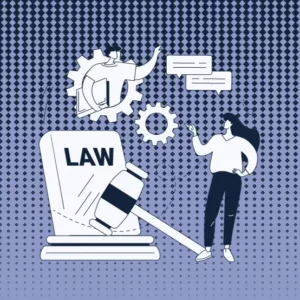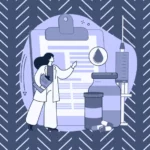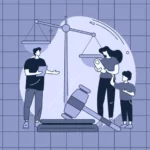Call: (800) 382-3176 or Chat with us
Ataxic CP Exposed: Medical Malpractice and Path to Healing
Ataxic cerebral palsy, a rare subtype of cerebral palsy, has been a subject of intrigue and concern for both medical professionals and affected families. This condition, characterized by poor balance and coordination, impacts the lives of those affected in various ways. But what causes ataxic cerebral palsy, and how can it be diagnosed and treated?
In this comprehensive guide, we delve into the causes, symptoms, diagnosis, and treatment options for ataxic cerebral palsy. By understanding these aspects, we empower ourselves to better support those affected by this condition and contribute to their improved quality of life.
Page Summary
- Ataxic cerebral palsy is caused by damage to the cerebellum and can be associated with a range of difficulties, including impaired motor coordination.
- Early recognition of symptoms such as poor balance and involuntary movements is essential for prompt intervention. Treatment options include physical, occupational, and speech therapy to improve quality of life.
- Medical malpractice may be a factor in ataxic cerebral palsy cases. Legal action may provide compensation for medical expenses and special needs costs.
Exploring the Causes of Ataxic Cerebral Palsy

Ataxic cerebral palsy results from damage to the cerebellum, a region of the brain responsible for regulating balance and coordination skills. This damage often occurs due to brain injury during fetal development or labor and delivery.
Ataxic cerebral palsy, accounting for approximately 5% of all cases, is the least frequent type.
Brain Damage and the Cerebellum

Refining movements and maintaining balance are key functions of the cerebellum. In fact, the cerebellum fine tunes movement, which is crucial for motor coordination. Damage to this area results in impaired motor coordination, leading to the symptoms associated with ataxic cerebral palsy. The consequences of cerebellum damage can be wide-ranging, as it affects a person’s ability to perform voluntary movements and maintain proper posture.
In ataxic cerebral palsy, the cerebellum’s damage disrupts its ability to fine-tune movement, leading to inaccurate, uncoordinated, and shaky movements. As a result, day-to-day activities like walking, picking up objects, or even speaking become more challenging.
Risk Factors for Developing Ataxic Cerebral Palsy
Several risk factors have been identified in the development of ataxic cerebral palsy, including premature birth, low birth weight, and maternal infections during pregnancy. Premature birth, in particular, is a significant risk factor, as it can bring about complications that increase the likelihood of developing cerebral palsy. Low birth weight has also been observed to raise the risk of ataxic cerebral palsy.
In addition to these factors, the following can also contribute to the development of ataxic cerebral palsy:
- Poor maternal health during pregnancy
- Stroke during pregnancy or after birth
- Difficult labor and delivery
- Traumatic brain damage during pregnancy, childbirth, or later in life
Recognizing Symptoms of Ataxic Cerebral Palsy

Individuals with ataxic cerebral palsy exhibit a range of symptoms, including:
- Poor balance and coordination
- Unsteady walking
- Involuntary movements
- Slow eye movements
Ataxia affects various aspects of a person’s life, including how ataxia affects speech, how ataxia affects walking, and even swallowing. The manifestation of these symptoms can vary, but understanding them can help in the early identification and intervention for those affected.
Recognizing that these symptoms can evolve over time and differ among individuals is key. However, early intervention and appropriate treatment can significantly reduce the impact of ataxic cerebral palsy on a person’s life.
Balance and Coordination Challenges
Children with ataxic cerebral palsy often experience difficulties in balance and depth perception, which can impact their ability to walk and complete daily activities. These challenges may manifest as:
- Impaired trunk control
- Wide base of support when standing
- Unsteady gait
- Swaying or pausing while walking
To better support children with ataxic cerebral palsy, it is crucial to understand the specific coordination difficulties they face, such as:
- Issues with balance
- Motor skills
- Inadequate posture
- Unsteady gait
- Deficiency of muscle tone
By addressing these challenges, we can help improve their quality of life and foster greater independence.
Speech and Swallowing Difficulties
Speech and swallowing difficulties are common in ataxic cerebral palsy due to poor muscle control and coordination. These challenges can manifest as “scanning” speech, characterized by a monotone voice with a breathy sound and irregular accelerations or pauses between syllables.
In addition to speech difficulties, children with ataxic cerebral palsy often experience intention tremors, which are involuntary movements that occur when a person attempts to execute a physical task. Appropriate therapy and interventions can greatly alleviate these speech and swallowing difficulties, thus improving communication and overall quality of life.
Diagnosing Ataxic Cerebral Palsy
Ataxic cerebral palsy diagnosed between 3 to 18 months after birth, typically presents with the following symptoms in a child:
- Developmental delays
- Awkward movements
- Difficulty following objects with their eyes
- Difficulties grasping things
Physicians differentiate ataxic cerebral palsy from other types by evaluating the distinctive movement patterns and coordination difficulties displayed by the individual, as well as considering the individual’s medical history, developmental milestones, and other clinical characteristics.
To diagnose ataxic cerebral palsy, neurologists play a crucial role by:
- Performing physical and neurological examinations
- Utilizing specialized assessment checklists
- Potentially requesting imaging scans and magnetic resonance imaging (MRI) to evaluate the brain and nervous system
They may also collaborate with other experts, such as pediatric physical medicine and rehabilitation specialists and child development specialists, to make a thorough diagnosis.
Early diagnosis permits prompt intervention and treatment, thereby minimizing the impact of ataxic cerebral palsy on a child’s life. By understanding the diagnosis process, families can better advocate for their child and seek the necessary support and care.
Treatment Options for Ataxic Cerebral Palsy
There are several treatment options available for ataxic cerebral palsy, including physical therapy, occupational therapy, and speech therapy. While there is currently no cure for ataxic cerebral palsy, these treatments can help manage symptoms, encourage independent living, and improve overall quality of life.
It is important to note that the effectiveness of these treatments may vary among individuals, and the best approach is often a combination of therapies tailored to the specific needs of the child.
- Speech therapy
- Occupational therapy
- Applied Behavior Analysis (ABA)
- Social skills training
- Sensory integration therapy
Early intervention is key to maximizing the benefits of these treatment options.
Physical Therapy and Balance Training
Physical therapy and balance training can help children with ataxic cerebral palsy improve their coordination and reduce the impact of their symptoms. Physical therapy typically involves aerobic exercises such as walking, running, cycling, and arm ergometry, along with balance training exercises intended to enhance balance and reduce symptoms.
Physical therapy for children with ataxic cerebral palsy offers several benefits, including:
- Improved coordination
- Alleviation of symptoms
- Enhanced muscle strength
- Improved precise finger movements
To achieve the best possible outcomes, regular physical therapy sessions are indispensable.
Occupational Therapy for Daily Living Skills
Occupational therapy focuses on helping children with ataxic cerebral palsy develop the skills needed for daily living and independence. This includes enhancing:
- Physical and cognitive abilities
- Fine motor skills
- Hand-eye coordination
- Visual perception
- Activities of daily living
By working with an occupational therapist, children with ataxic cerebral palsy can improve their ability to perform everyday tasks, such as:
- Dressing
- Grooming
- Feeding
- Eating
- Bathing
- Toileting
This can lead to increased independence, self-esteem, and a sense of accomplishment, all of which are important aspects of depth perception.
Speech Therapy for Communication Improvement
Speech therapy can help improve communication skills and address swallowing difficulties in children with ataxic cerebral palsy. Strategies employed in speech therapy may include:
- Articulation drills
- Exercises to promote speech improvement
- Instruction in sign language
- Communication via writing and painting
- Addressing pronunciation, fluency, and language development
In addition to enhancing vocal clarity, listening aptitude, and communication proficiency, speech therapy can also improve:
- Eating and swallowing abilities
- Self-assurance
- Schooling
- Socialization
in children with ataxic cerebral palsy. Speech therapy, by addressing these challenges, plays a significant role in supporting the overall well-being of affected children.
The Role of Medical Malpractice in Ataxic Cerebral Palsy Cases
In some cases, medical malpractice may play a role in ataxic cerebral palsy cases, and families may be eligible for financial compensation to cover medical expenses and special needs costs. When seeking compensation for a child with ataxic cerebral palsy due to medical malpractice, parents should consider consulting with a birth injury law firm specializing in cerebral palsy cases.
By seeking justice and compensation for their child’s condition, families can take the following steps:
- Gather all relevant medical records and documentation related to the child’s condition.
- Work with a law firm to investigate and build a strong case.
- File a cerebral palsy medical malpractice lawsuit against the responsible healthcare provider or facility.
These steps can help families in seeking justice and compensation for their child’s condition.
Complex condition that affects balance and coordination
Ataxic cerebral palsy is a complex condition that affects balance and coordination skills, speech, and swallowing abilities. Understanding the causes, risk factors, symptoms, diagnosis, and treatment options is crucial in supporting those affected and their families. Early intervention and appropriate treatment can significantly reduce the impact of ataxic cerebral palsy on a person’s life.
As we continue to raise awareness and advocate for those affected by ataxic cerebral palsy, we empower families and individuals to seek the necessary support, care, and resources to improve their quality of life and foster greater independence.
Frequently Asked Questions
What is ataxic cerebral palsy?
Ataxic cerebral palsy is one type of CP that affects motor function, causing issues with balance and coordination. People living with ataxic CP struggle to walk with their legs closer together than other kids and have difficulty with activities that require precision movements.
What are the symptoms of ataxic CP?
Children with ataxic CP typically demonstrate a wide-legged gait, uncoordinated body movements, and difficulty with fine motor skills such as holding utensils. Other issues that can arise include vision and hearing impairments, speech difficulties, impaired eating abilities, behavioral problems, and learning disabilities.
How does ataxic cerebral palsy affect speech?
People with ataxic cerebral palsy tend to have a monotone voice, often referred to as scanning speech. They may also alternate between sudden bursts of fast and slow cadence while speaking.
What is the difference between spastic and ataxic cerebral palsy?
Spastic cerebral palsy affects different parts of the body, while ataxic and athetoid cerebral palsies usually involve all parts of the body. By identifying the type of cerebral palsy, doctors and therapists can recommend the best treatments.
What causes ataxic cerebral palsy?
Ataxic cerebral palsy is caused by damage to the cerebellum, typically due to injury during fetal development or labor and delivery.








